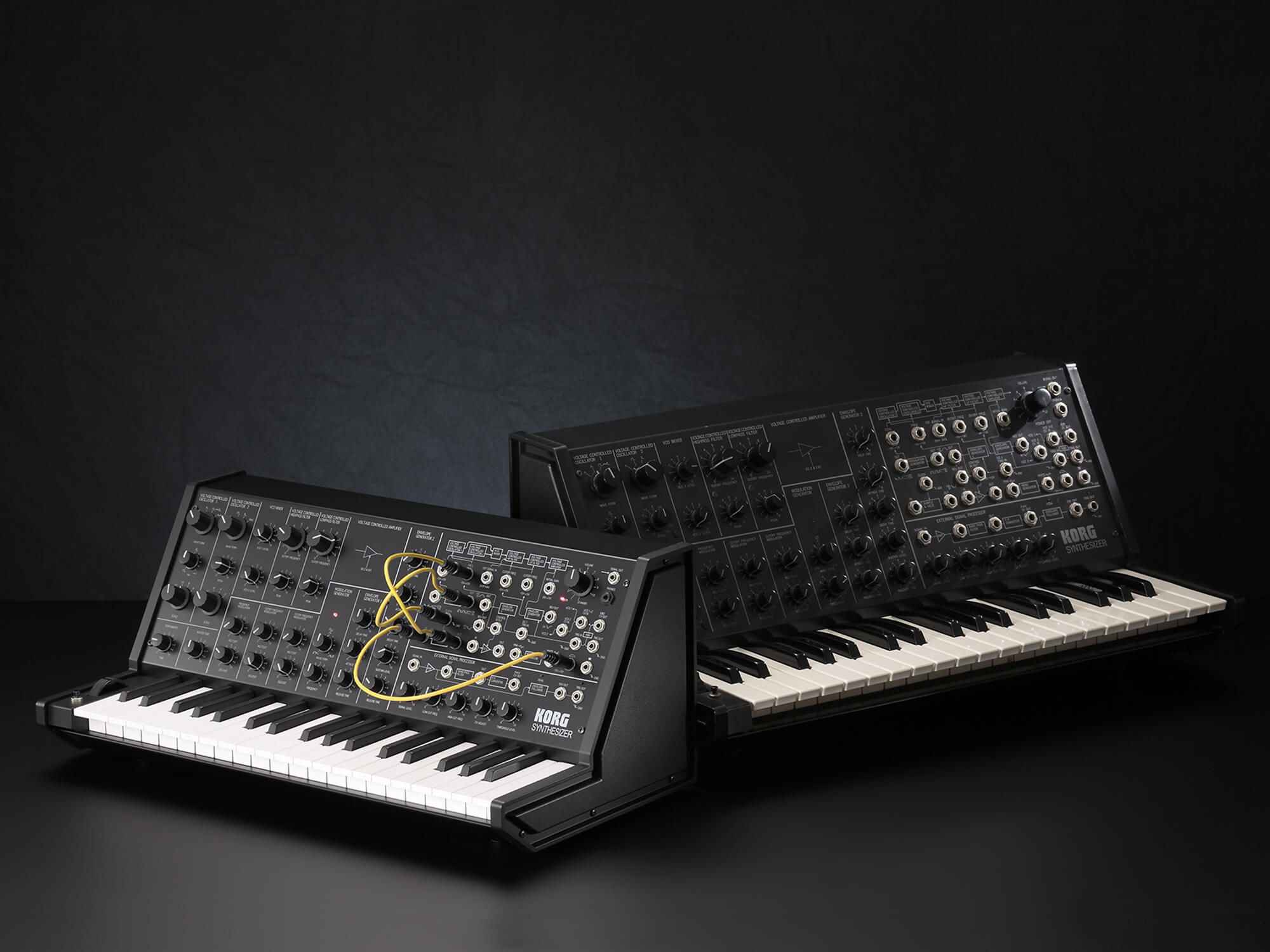
How the Korg MS-20 and the MS-20 Mini became a parent-child powerhouse
45 years ago the MS-20 hit shelves for the first time. 35 years later, Korg announced the MS-20 Mini. Today, musicians everywhere continue to sing the praises of both.
Korg MS-20 and MS-20 Mini
It’s been a mere decade since Korg announced its MS-20 reissue, the MS-20 Mini. Not rebooting it with any screen, software integration or preset storage – simply downsizing it a little. The MS-20’s quarter-inch patch bay sockets became minijack sockets; its keyboard shrank from full-size to a larger-than-miniature format uniquely sized for its 14 per cent smaller offspring.
This semi-modular synth entered a market palpably unsure of its feelings toward analogue instruments. Meticulous software emulations loomed large and modern digital-meets-analogue architecture often mitigating idiosyncrasies like oscillator drift, which would infuriate synthesists of the past. Was there really a place for a synth like the MS-20, a famously gritty, all-analogue instrument, in the modern synthscape?
The answer from creatives was a resounding ‘yes’. “I’ve got three,” Richard D. James, aka Aphex Twin, told Future Music in 1993. “It’s a mad keyboard, it’s got a great range of sounds.”
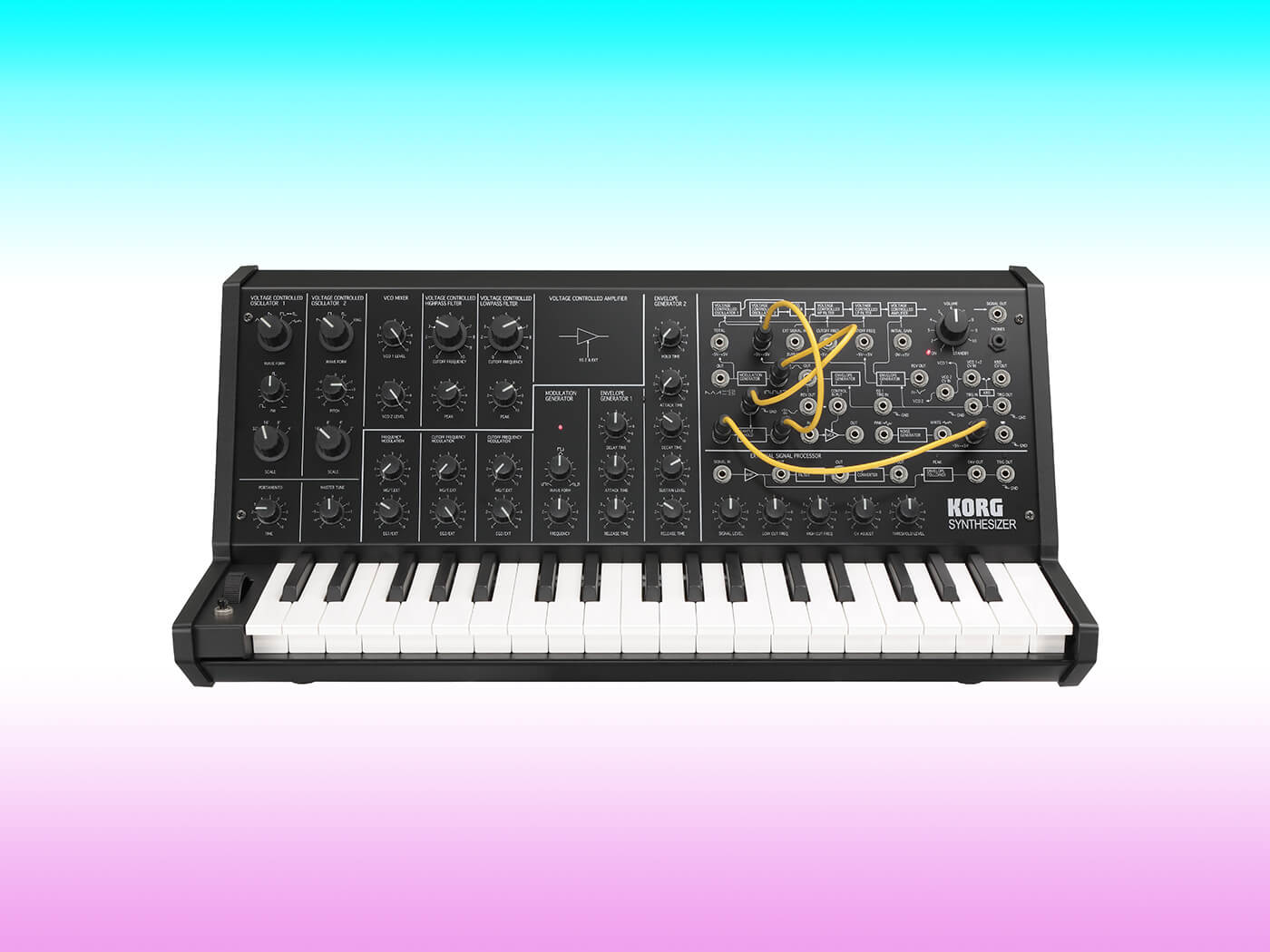
Korg’s MS-20 Mini has, in its relatively short tenure, already become something of an icon, finding a comfortable home in bedrooms and iconic studios. A reissue in all but the purest sense of the term, it is demonstratively set apart from a majority of its peers by the fact that many modern artists and producers who now venerate the MS-20 do so on account of discovering it as an instrument in its own right.
Mini or full size, the MS-20 now belongs in a strange realm, where it essentially manages to be both a vintage and a modern classic. The fact that the MS-20 has played a key role in the history of electronic music since it first saw the light of day in 1978 is, in many ways, a footnote to the influence that the instrument has for artists now.
Making History
If the MS-20 posits itself as a raw and unabridged, even impulsively designed synth, it’s because that’s exactly what it is. Far from being whittled down by team after team, the MS-20 was primarily the brainchild of just two young designers: Fumio Mieda and Hiroaki Nishijima.
“If you only have two people working, it’s easier to harmonise options,” Mieda said in a 2013 interview for Korg. Mieda was already an established name at the company when the MS-20 first entered production, thanks to his key role in the design of the preceding PS-3000 series of polyphonic synths. Nishijima, meanwhile, joined Korg as a university graduate while the MS-20 was being developed, immediately finding himself in the Technical Department and in charge of the project.
“We already had circuits we could work on— the PS-3000 series’ circuits were all designed by Mr Mieda and are therefore used in the MS-20 with very few changes,” remembered Nishijima in the same interview. “A few adjustments were made so they are not exactly the same. But the basic circuits were already there from the beginning.”
Mieda’s designs had left very little to be desired, a foundation allowing for more creative functions in other areas to take precedence when it came to developing the MS-20. Aside from deciding the MS-20 should have a vertical panel, even the synth’s body shape and size were ultimately left to the sheet metal worker to decide on. “The MS-20 was designed partly based on the PS-3000 series,” said Mieda. “But we added some new features. Some of them were added without even being tested first!”
It’s apparent that this maverick process has characterised the final product in almost every way; the MS-20 is a synth that very much rewards risk-taking and rule-breaking. One such feature was the MS-20’s ring modulator. “A standalone ring modulator module would cost about 1 million yen,” explained Mieda. “But when creating new sounds, ring modulators were of great value to us.
“It’s true that ring modulators screw up scales and that they’re hard to use. But they were important – in terms of fun!” So too with the MS-20’s external signal processor; a circuit that occasionally took on a mind of its own, featuring a frequency-to-voltage converter to allow sounds to be played into the synth from anywhere and be frequency-matched by its oscillators.
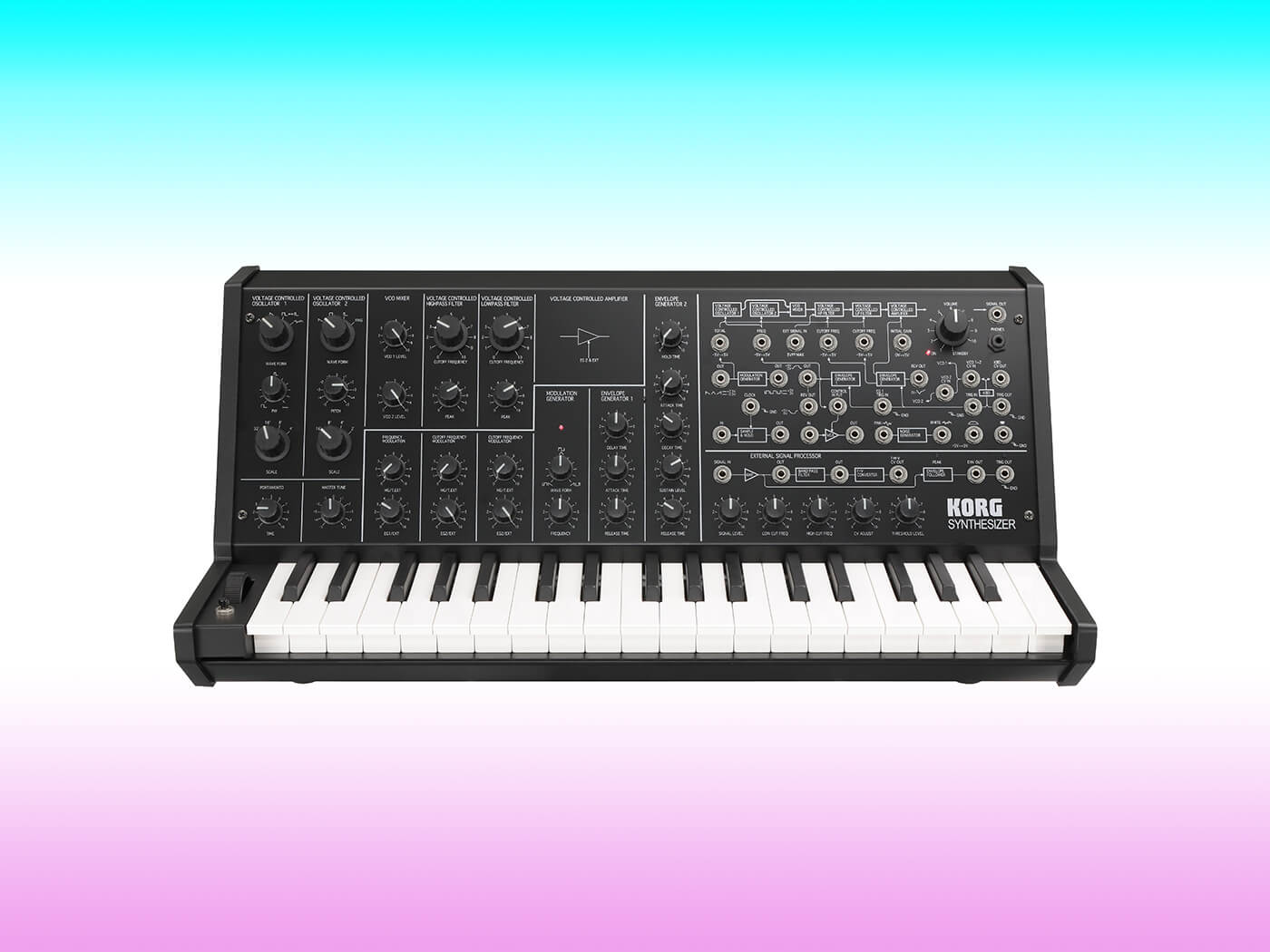
One producer whose arsenal would be incomplete without the MS-20 is Scott Hansen, aka Tycho. For him, the MS-20 represents not just an essential tool, but his original conduit to the world of analogue synthesis itself.
“I first came into contact with the MS-20 without knowing it, through Daft Punk’s track Da Funk,” he remembers. “That sound resonated with me. I’d never even touched a musical instrument when I heard that song. I’m sure I’ve heard it in a bunch of other places as well, but hearing that, I was like, ‘Man. That’s a really cool sound’.
“When I started making music, everything was digital, everything was ‘virtual analogue’. I had Access Virus, the Novation Nova series, and all that stuff. I just thought that’s what a synthesizer was: massive polyphony, reverb built in… all that. So I just didn’t understand what the point of a monophonic synth was.
“But one day, a buddy of mine, who had all these synths he wasn’t really using, gave me an MS-20. I really didn’t connect with it at first. I thought it was so raw; I didn’t even know where to start with it. But over the years, I just kept messing with it and started really finding all its cool quirks, particularly the filters, and the resonance.”
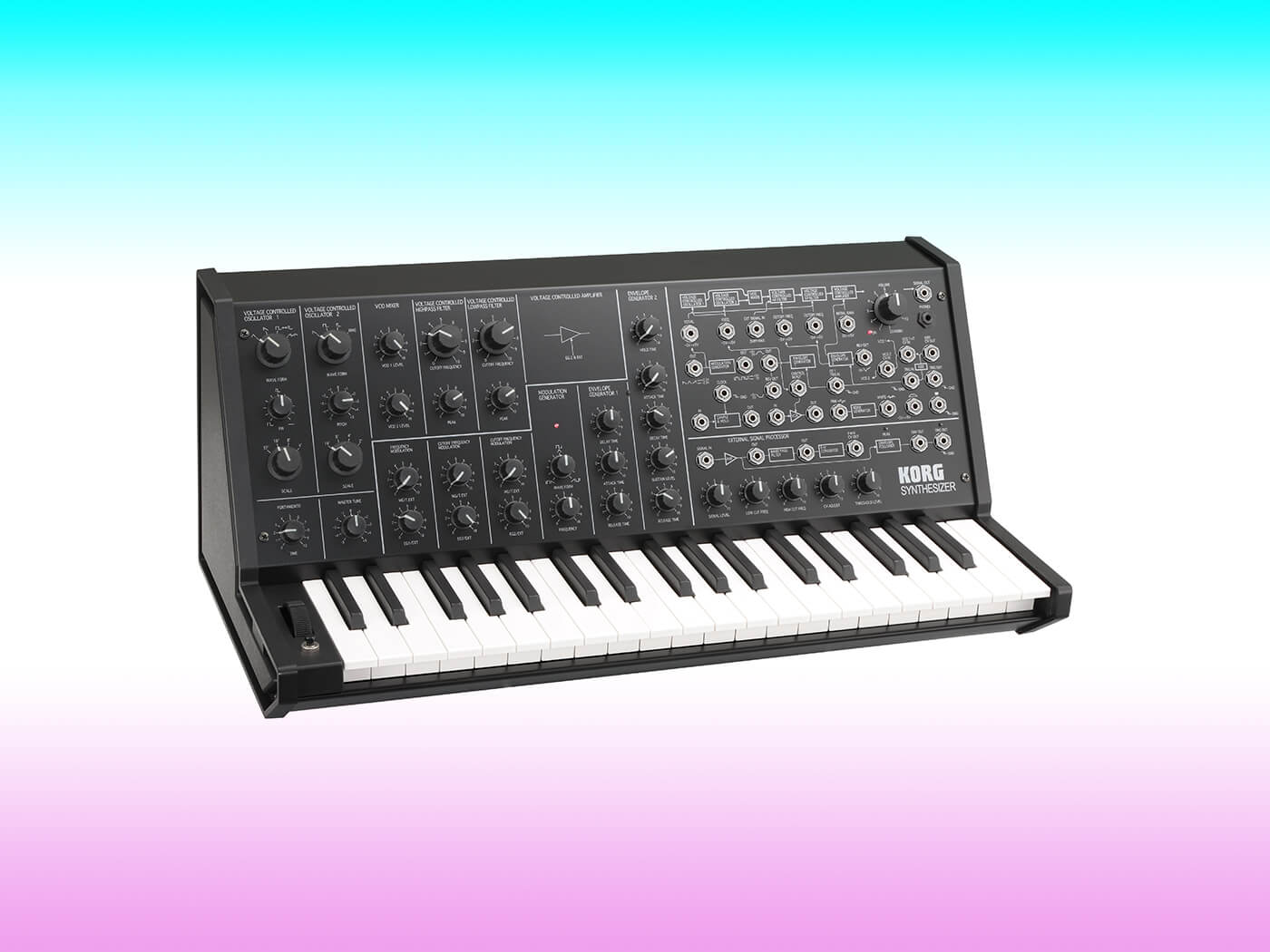
Filters of legend
For many, the talismanic design feature of the MS-20 is its dual low-pass and high-pass resonant filters. Fumio Mieda was intent that his instrument be able to synthesize a range of speech-emulating formant sounds; a sonic palette that he deemed would complete the synth’s already formidable functionality.
“A vowel sound can be synthesized with two voices,” he explained in 2013. “So if you move [the cutoff and resonances on both filters] you can easily produce “‘A’, ‘E’, ‘I’, ‘O’, ‘U’. I wanted to make sure this could be done.”
“I think that was the biggest thing,” Tycho remembers. “The second I figured out that whole hyper-resonance trick on both ends, on both the high-pass and low-pass filter to get that crazy, growly sound. It was like, ‘Wow.’ Of course, it doesn’t necessarily fit into my music in all contexts. But it was a really interesting place to start. And then you back it off and you get into that warmer space, it still has this texture to it that’s really unique. Even when you just have a simple thing going on, you can still sense it.”
Over a short initial production run of five years, the MS-20’s filter underwent some changes. But when the decision was made to develop an MS-20 Mini, it was the earlier MS-20 filter model— dubbed the ‘Mieda VCF’ – that proved the natural choice.
Danny Herbert, producer-member of trailblazing electro quintet Redolent and longtime MS-20 Mini user, bases himself at Edinburgh’s venerable Post Electric Studios; a facility favoured by the likes of Steve Albini and a staple studio in the Scottish music scene. “I’m quite ADHD,” he says. “I just need to be able to plug things in. And have it up and running really quickly. In my studio, it’s always plugged in, always ready to go.
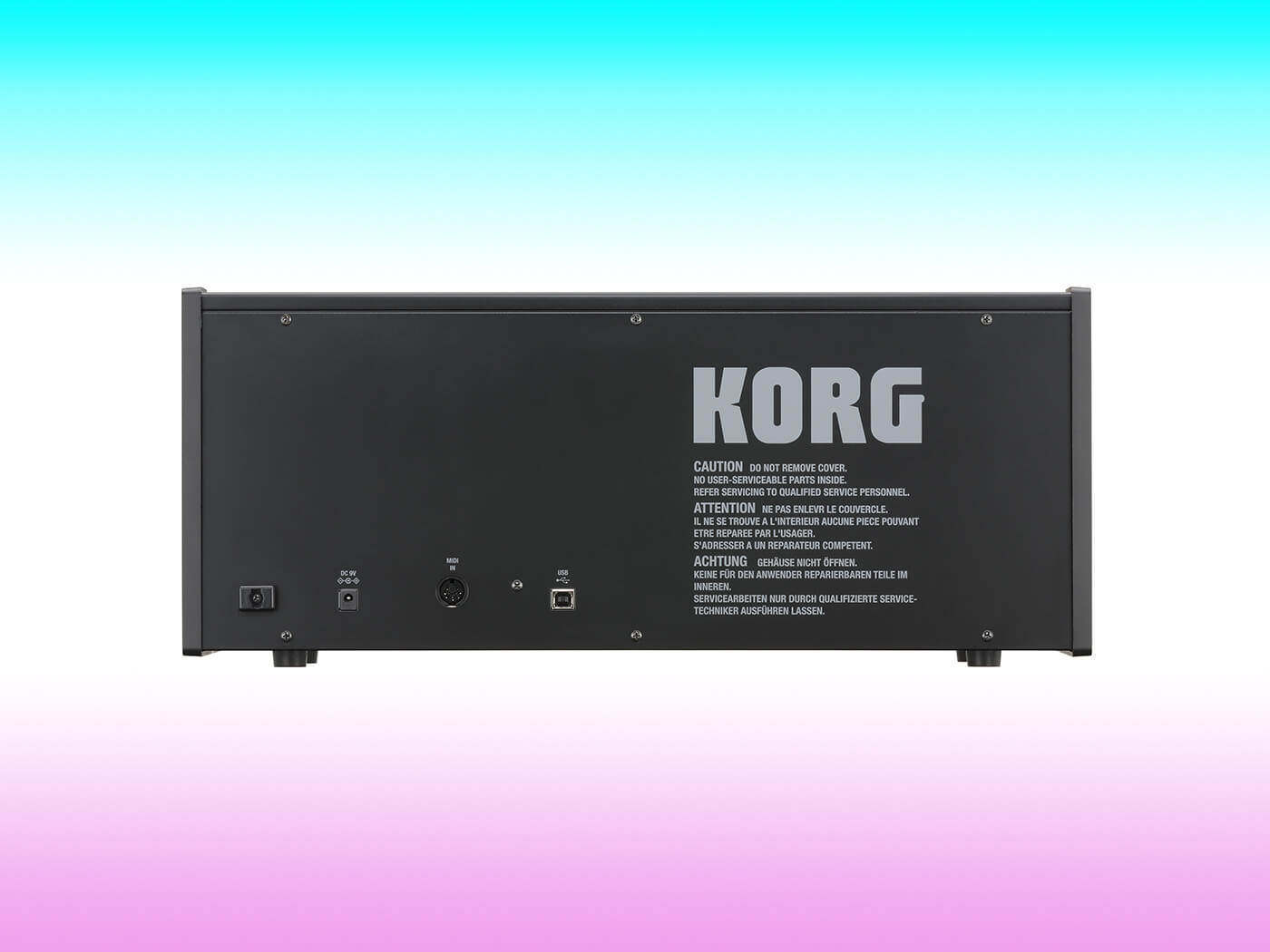
“The coolest bit is the filter,” Herbert says. “Having those two filters, being able to chain them into each other, and just crank the hell out of the resonance…that’s the most amazing thing. I use it for what we in the band just call ‘dins’: weird noises. Squealing, organic noises. For me, you can’t get that out of a digital emulation, because it just distorts badly and sounds kind of… shit [laughs].”
Tycho remembers that resonance giving him a similar creative rush. “That super-resonance is generative,” he says. “It’s actually creating tones and frequencies – I guess harmonics would be the word, but it’s the way it adds these secondary elements to the notes that you’re playing. And it can be really interesting, the way that it opens up something and changes things. It can behave as another oscillator, especially if you tune it correctly and have the envelope set correctly. Yeah, it’s just a beautiful thing.”
Bristol-based artist Finlay Shakespeare treads the line between artist and synth designer, performing under his own name while also heading up the wildly creative developer Future Sound Systems. Shakespeare is a true synthesist, but for him, the MS-20’s functionality goes far beyond its capacity as a standalone synthesizer.
“Having those two filters, being able to chain them into each other, and just crank the hell out of the resonance…that’s the most amazing thing.” – Danny Herbert
“I treat it as much as a piece of outboard gear as I do a synth,” Shakespeare explains. “It’s so versatile. It ends up pretty much on everything I do. Even recording acoustic guitar and vocals, something usually ends up going through the MS-20. Just to give it that bit of…something, you know? I’ll run audio through its filters, or I’ll get the audio to FM the filters slightly and dub that on top, really low… then just adjust the level, according to how much of that weird distortion I might want.”
In Shakespeare’s experience, however, the MS-20’s uncompromising reputation verges on disservice. “So many people regard the MS-20 as being really aggressive and noisy,” he reflects. “But it isn’t necessarily like that at all. It can make smooth pads, for example. If you multitrack it, it sounds really lovely. And people just forget that you can turn the oscillators down on the mixer. [laughs] Like, you can do that! As soon as you stop driving those filters so hard, they suddenly become a different thing.”
Suited and rebooted
You may have noticed the terms ‘MS-20’ and ‘MS-20 Mini’ being used interchangeably. This is because they are, in essence, interchangeable instruments.
“My main goal making the MS-20 Mini was to recreate the sounds the MS-20 had,” said Hiroaki Nishijima in 2013, “to the point where you can’t tell the difference between them, even if you play [the Mini] next to the original MS-20.”
The Mini is certainly the most successful MS-20 reissue, but it’s by no means the only one to have hit shelves since 1978.
In 2004, the Korg Legacy Collection offered the MS-20lc, visually almost indistinguishable from the Mini but no more than a MIDI controller for Korg’s software emulation. Further software iterations followed, including 2008’s curious DS-10 for the Nintendo DS, a game cartridge that used the handheld console’s interface and stylus to play, tweak and sequence synth and even drum sounds.
Emboldened by the subsequent Mini’s success, Korg went on to release a white version of the MS-20 Mini, an MS-20 DIY kit in 2014 and, in 2021, a line of full-size, MS-20FS reissues in an array of different colours.
Recently, French software developer Arturia has thrown its hat into the ring, adding a polyphonic MS-20 emulation, the MS-20 V, to its V Collection, and releasing a filter emulation plugin in the Filter MS-20.
The ubiquity of the Mini, however, remains uncontested. Is it possible that some instruments simply won’t comply when it comes to software?
“I’d always been digital synth-focussed, working in the DAW, playing around with Ableton Live synths,” says Danny Herbert. “You’d get all these emulations, but you never really knew what exactly they were emulations of. The MS-20 does sound different [to software versions], I don’t know why. Even when companies emulate it really well, those emulations still sound different.”
Tycho has a slightly different take on the software-hardware relationship. “Software has just come so far,” he says. “Both the beauty and the problem with [recording] hardware instruments is that you’re locking in a performance, locking in those settings. I’ve been trying to make the album I’ve been working on lately a lot more dynamic in terms of automation: filters opening up or certain sounds changing over time. So whenever possible, I’ve been using software.
“UA makes this amazing Minimoog emulation, Arturia makes one of the MS-20. So there are these counterparts that I feel are just as good as the hardware, and I feel the same when I play them. And that’s really all that matters. The MS-20 is a pretty complex instrument, so it’s amazing to be able to go back and be like: ‘Oh, what if I’d done this? Or what if I’d patched this differently? What if the filter opened a little bit more here? So in that sense, it’s been amazing to be able to work with those software counterparts.

Crossing Borders
Perhaps software has found its footing next to celebrated hardware. Or is it vice versa? Either way, the introduction of the Mini is considered by many to have been the harbinger of the analogue synth boom of the past decade. It has impacted the workflow of a new generation of musicians– electronic or otherwise– looking for a raw and characterful, yet accessible and affordable electronic instrument.
One such artist is Matt Baty, bellowing frontman of Newcastle-based neo-metal powerhouse Pigs Pigs Pigs Pigs Pigs Pigs Pigs.
“Before using the MS-20 Mini, I started out using a 1979 Yamaha CS-15, which is gorgeous but its frequency output didn’t have the fortitude to cut through the might of the Pigs x7 backline,” Baty explains.
“When we started to play live, I noticed that the Korg MS-20 Mini seemed to be a staple amongst the psych and noise bands we shared a stage with. I was impressed by the shimmering glacial heights it could hit, the way it would sit high above gnarly guitars and rumbling basses. Those massive filter sweeps…”
Baty can commonly be seen onstage hunched over his battered white-finish MS-20 Mini, wringing the filter cutoff for all its worth as his bandmates deal in walls of guitar hook-led distortion. The synth is every bit at home in this setting.
“It reminded me of the soaring synth in Hawkwind’s [1972 rock track] Silver Machine,” Baty continues. “At the time that was the kind of sound I was looking to replicate. It’s been on stage with me ever since. Every night it plays its own part in fuelling the Pigs x7 cacophony of sound.”
Similarly, producer Marcus Hamblett has lent his talents to music by the likes of James Holden, Laura Marling, Broken Social Scene, Bear’s Den and many more. “It’s just much more evil than any of the other monosynths I have,” he says.
“I have all different synths in my studio, but this one is just an absolutely horrendous, evil, gnarly beast. Playing live, I mostly use it for massive bass. If I’m using Ableton for other parts of the set, everything is very much ‘on the rails’. But the MS-20 is very much off the rails! It’s very live.”
Naughty or nice, full-size or Mini, the MS-20 is a synth for all ages. A litany of artists incorporate it into their practice in all manner of different ways, and all will posit different views of what the MS-20 does best. But one thing remains incontrovertible: there’s simply nothing else quite like it.
“The MS-20 just has a Spartan-ness about it,” Tycho reflects. “It presents itself in a very minimal and efficient way, considering how much is possible with it. It’s a stroke of genius, the way it’s presented. It’s approachable, even though it is pretty complex. And you can get lost in it, and pretty quickly find yourself thinking, ‘I have no idea what made that sound or what’s going on there.’ But that’s the charm of it.”